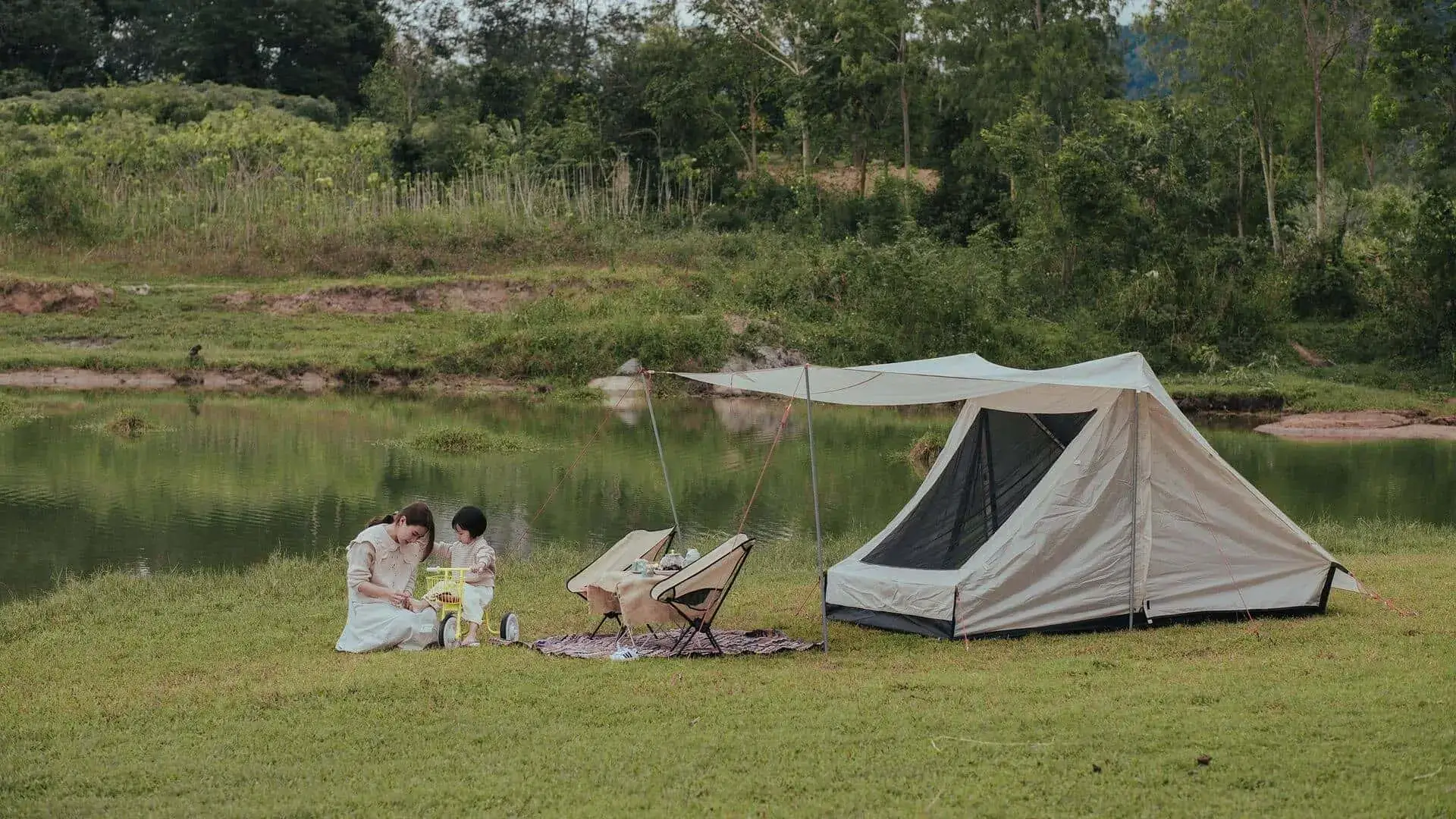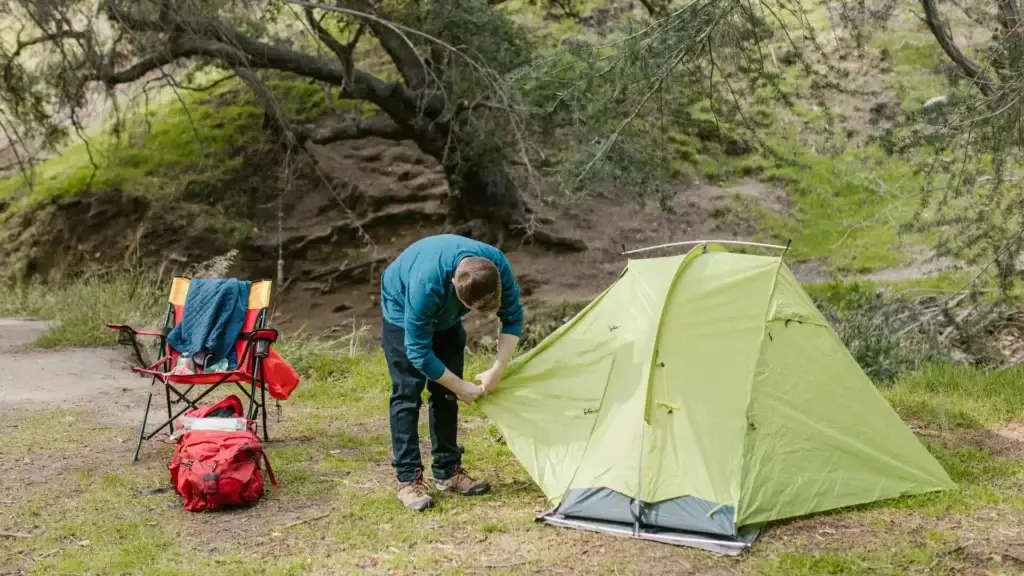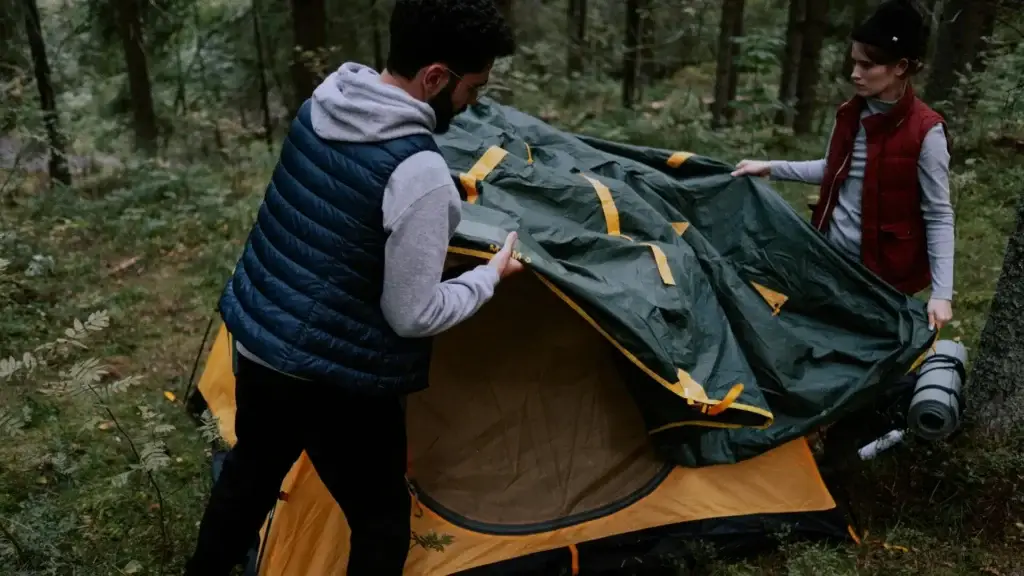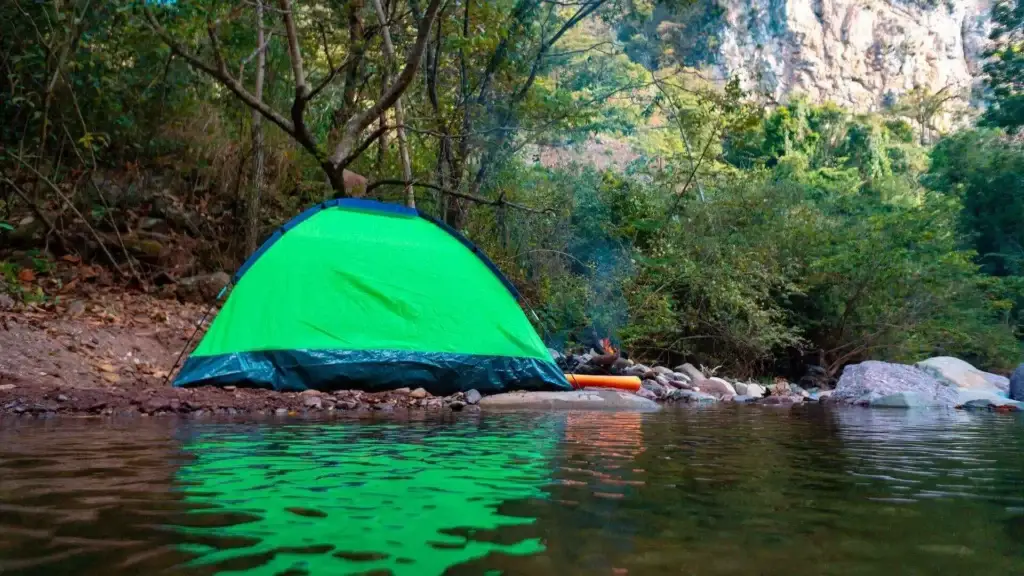
How To Clean A Tent After Camping?
When you return from a camping trip or backpacking trip, it’s essential to be prepared for the cleaning process. Often, after a few days of use, your tent may end up as a dirty tent with lingering smells of campfire smoke, mold, or mildew. It’s also common for zippers to get stuck, or the seam sealer may fail. This is when going through your gear becomes crucial. You might not realize it, but cleaning your tent is a fantastic way to save money on replacing your camping equipment and avoid contributing to waste in landfills. Instead of discarding an old tent, consider giving it a good wash. You can also clean your ultralight tent or bikepacking tent, saving you from unnecessary expenses while ensuring your camping gear lasts longer.
Unlike in an urban dwelling, your home in the outdoors needs only a little love and attention to keep your tent in top shape. A quality tent, when treated with care, can provide faithful service for years in the field. If you’re wondering how to properly maintain your tent, the best advice is simple: follow a few important rules like always reading the directions, being gentle with zippers and poles, cleaning your tent and fly periodically, and never storing a wet tent. By following these tips, you ensure your tent will continue to serve you well for years to come.
Table of Contents
ToggleTent Care During Setup
When preparing to set up your tent, it’s a good idea to start with a practice pitch in a no-pressure setting. This helps you become familiar with the process before you’re in the wild. Make sure you have all your stakes, guylines, and other accessories ready. Always choose an established campsite with a smooth, level surface that’s free of vegetation. It’s important to follow the Leave No Trace principle and clear any debris like pine cones, twigs, or small rocks that could poke a hole in your tent floor. By doing this, you avoid disturbing your tent site and keep your setup safe.
Next, use a footprint or a custom-cut ground cloth that matches your tent’s floor plan. A footprint protects your tent from abrasion and provides a clean surface to pack up your tent later. It also prevents rainwater from collecting under your tent, unlike a generic ground cloth or tarp, which might catch water if not tucked correctly. Be mindful of how you place the footprint so it doesn’t extend beyond the perimeter of your tent floor, as this could create unwanted water pooling.
Finally, make sure not to leave your tent in direct sun for long periods. Minimizing exposure to ultraviolet (UV) rays is crucial for increasing the life of your tent. If you must leave the tent out in the sun, consider leaving the fly, which is more UV resistant, on your tent while you’re off bagging peaks or exploring. When setting up, take care with the poles—avoid whipping them around or snapping their shockcorded sections too quickly, as this could chip or weaken them. By unfolding and fitting the pole sections slowly, your tent setup will go more smoothly and prevent any damage to both your tent and your hiking companion.

Tent Care During Use
While using your tent, it’s important to be gentle with the zippers to avoid damaging them. If a stuck zipper occurs, try holding the zipper track with one hand and back the slider carefully, wiggling it from side to side until the stuck fabric is free. If the zipper splits, gently back it up and try to re-engage it. If it keeps splitting, use pliers to squeeze the slider and give it a slightly tighter hold on the zipper track—but be careful not to overtighten or jam the slider. It’s also important to keep boots outside, ideally in the vestibule, because dirt, grit, and pebbles can fall onto the tent floor and abrade or puncture the fabric.
When camping, always store food and fragrant personal products in a secure container outside your tent. These items can attract little creatures that might chew through the fabric in search of their next meal. Additionally, never leave an unsupervised dog inside the tent. Their teeth and claws can cause significant damage to the materials, especially when your faithful companion decides it’s time to join you outside.
Tent Care During Break Down
When it’s time to pack up, start by giving your tent a good shake to get rid of any dirt, debris, and trash. This is especially easy with a freestanding tent, as the poles will help hold the tent open while you dump out all the excess dirt. Afterward, when you need to remove a shockcorded pole, be sure to push it rather than pull. If the other pole end or pole section gets hung up, it can put undue stress on the elastic cord, which can damage it. It’s best to work from the middle of the pole and break it down gradually, which will evenly distribute the tension along the cord. Repeat this for each subsequent half section until the pole is fully folded.
Once the tent is free of dirt, it’s important to dry your tent before stuff-sacking it. Even a well-ventilated tent can accumulate condensation, often under the floor and rainfly. Leftover moisture can cause long-term damage, so dry your tent as much as possible before packing up and hitting the trail. You can drape your tent and fly over a branch, a bush, or even a boulder, but be careful not to poke or snag the fabric.
In wet conditions, always make sure to dry your tent as soon as you return. If it’s a sunny day, set it up in the yard; if the weather is bad, hang your tent to dry in a garage or any non-carpeted room. When it comes to storing your tent, there’s an age-old debate between roll and stuff. Stuffing advocates say it avoids repeated creasing and weakening of materials and coatings along the fold lines, while folding advocates believe it’s less stressful. Either way, your tent materials should be sturdy enough to withstand either approach.

How to Clean Your Tent
After a long camping trip, especially if your tent was exposed to sand, fine dust, bird droppings, or tree sap, it’s important to give it a gentle cleaning. If you’re someone who often goes on short trips, try cleaning your tent at least once per season. Avoid using a machine-wash or machine-dry as it can cause damage to your tent. A washer, especially one with a top-loader and agitator, can stretch or tear the fabric, mesh, and seams. Dryers can also generate enough heat to harm your tent, so it’s best to steer clear of these methods.
For basic cleaning, use a non-abrasive sponge, cold water, and a non-detergent soap. Scrub the soiled areas by hand, being especially gentle on the coated areas of the floor and fly. Avoid using household cleaners like harsh dish soaps, bleach, or spot removers. These products can attract insects, rodents, and other bigger creatures. They also harm your tent’s durable water repellent (DWR) coating, impairing its ability to protect you in the elements. For more detailed cleaning instructions, see the step-by-step article on cleaning your tent.
⇒Also Read About Best Heavy Duty Camping Tents
Waterproofing Tent Seams and Coatings
To extend the life of your tent, re-waterproofing both the tent and rainfly is essential. This process typically requires sealing products that need up to 24 hours to dry completely, so ensure you have a designated space free of debris where you can spread out your tent to dry. If your tent has leaky seams, it’s important to reseal them. Seams are vulnerable areas that are often sealed with seam tape, but over time, they can fail. Inspect them periodically for damage, and if you notice that the tape is peeling off, remove the sections and apply new seam sealer to the outside of the fabric. This will also help fix any tiny holes in the main tent fabric.
If the waterproof coating on the fabric is starting to fail, you’ll need to decide whether to reapply the coating or replace the tent. Look for signs of wear on the fly or floor, such as peeling, which will usually be visible on the inside of the fabric. To recoat worn areas, start by gently cleaning the surface to remove flakes, then apply a thin coat of paint-on polyurethane sealant. If the coating is gooey or has a foul odor, it’s a sign that it’s time to replace the rainfly. In some cases, especially if the floor is failing, you may need to invest in a new tent.
Make sure to use the correct product for your tent’s fabric and coatings. Rainflys are typically made from polyester or nylon, both of which have a polyurethane coating. Some lightweight nylon rainflys are infused with silicone, which never requires recoating. Each material requires specific coating and seam sealer products that are formulated to match the fabric’s unique needs.
Steps to Clean a Tent
Cleaning your tent after a camping trip is essential to ensure it lasts for many more adventures. Follow these steps for proper care and maintenance:
- Pine sap removal: Use mineral oil or alcohol-based hand sanitizer to remove pine sap from your tent. Be careful not to let it stay on the fabric for more than 15 minutes as the chemicals may affect some technical tent fabric. Rinse thoroughly after applying.
- Zipper check: Ensure your zippers open and close smoothly. If dirt, mud, or salt from beach camping is stuck in the zipper teeth, gently use a toothbrush and rinse with water to dislodge sand. Apply zipper wax lubricant to keep it running smoothly.
- Repair any rips: Use Gear Aid Tenacious Tape to repair holes, frays, or rips in your tent. If you have duct tape on it, carefully remove it before proceeding to ensure a better seal with the tape.
- Prepare your soapy water: Fill a bathtub or large sink with lukewarm water and add the appropriate soap for cleaning. If you’re using a 5-gallon bucket, it’s best to rinse the tent outside with a hose.
- Soak your tent: Soak your tent in the soapy water, following the directions on the tent cleaner. Avoid hot water, as it can harm the fabric. After soaking, rinse the tent until the water runs clean.
- Drying your tent: Hang your wet tent in a cool shady area to dry completely. Avoid direct sunlight to prevent UV radiation from weakening the fabric.
- Optional treatment: After your tent is dry, apply Permethrin or Durable Water Repellent (DWR) spray to help repel insects like ticks, mosquitos, and chiggers and restore waterproofing.
These steps will help ensure your tent stays clean, functional, and ready for your next camping adventure.
Why Cleaning a Tent Matters
Cleaning your tent is essential for keeping it in good condition for your next camping trip. Not only does it help remove odors and stains, but regular tent cleaning can also improve breathability and restore waterproofing. Instead of replacing your tent, cleaning it can be an excellent alternative and help you save money in the long run. Performing regular tent care each season is a great way to maintain its functionality. If your tent requires repairs, you can always refer to guides like How to Repair a Tent or How to Fix Zippers on Outdoor Gear to ensure it stays in top shape.

Frequently asked questions (FAQ)
Q: How often should I clean my tent?
It’s a good idea to clean your tent after every camping trip, especially if it’s been exposed to dirt, mud, or other harsh conditions. If you’re using your tent frequently, try cleaning it at least once per season to keep it in good shape.
Q: Can I wash my tent in a washing machine?
No, you should never machine-wash your tent. The machine can damage the fabric, seams, and zippers. It’s best to clean your tent by hand with mild soap and water.
Q: How do I remove pine sap from my tent?
To remove pine sap, use mineral oil or alcohol-based hand sanitizer. Be sure not to scrub too hard and let it sit for no more than 15 minutes to avoid damaging the fabric.
Should I apply waterproofing to my tent?
Yes, it’s a good idea to re-waterproof your tent occasionally to restore its waterproofing and breathability. This can help extend the life of your tent.
Q: How do I fix a broken zipper on my tent?
If the zipper is stuck or broken, clean it with a toothbrush and rinse it with water to remove any debris. You can also use a zipper wax lubricant to help it move smoothly. If needed, follow a guide on how to fix zippers on outdoor gear.
Conclusion
Cleaning and maintaining your tent after each camping trip is crucial to ensure it lasts for years to come. Regular tent care helps prevent odors, stains, and wear, while also keeping its waterproofing and breathability intact. By taking proper care of your tent, you can avoid costly replacements and make sure it’s always ready for your next adventure.
